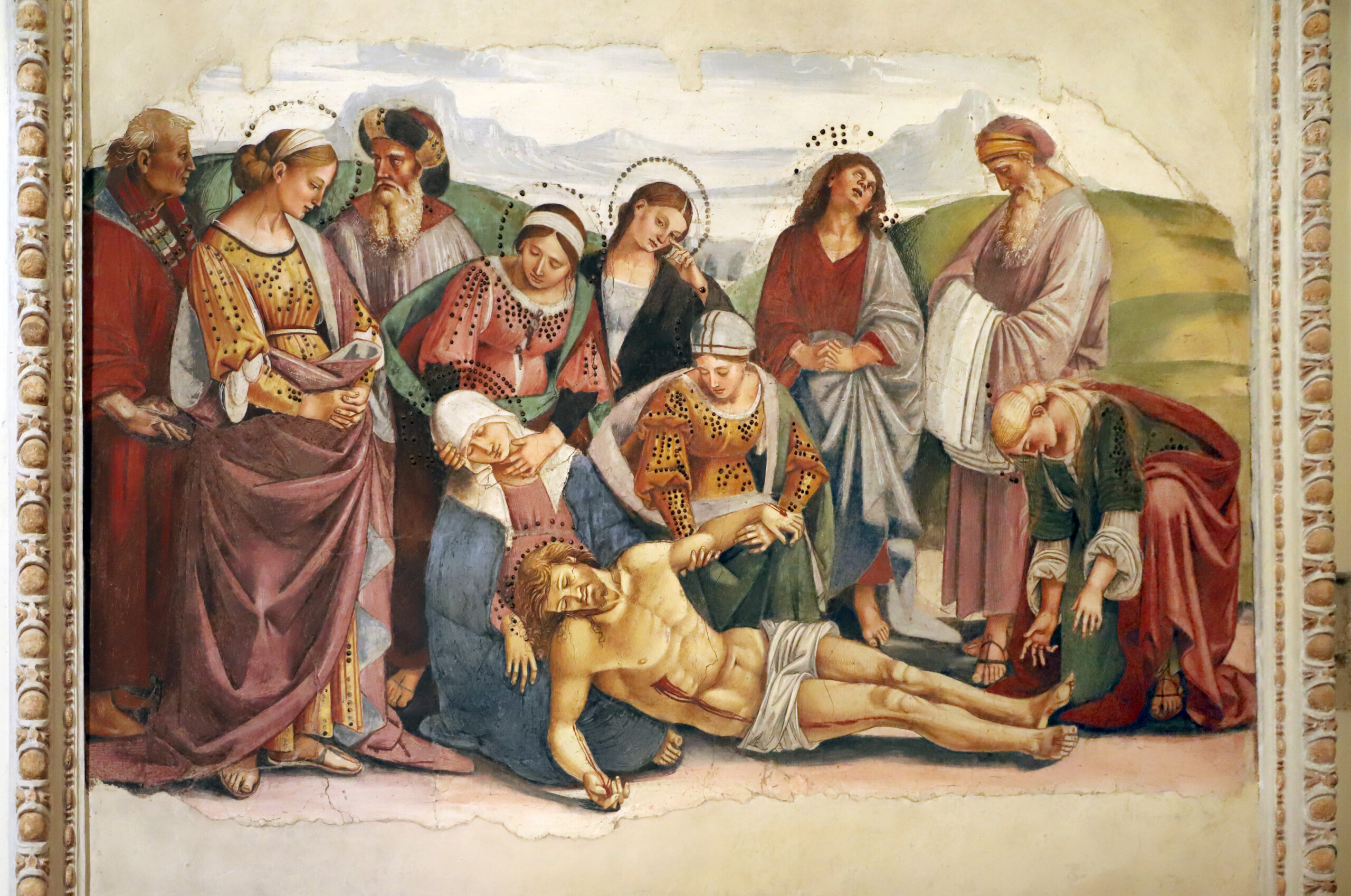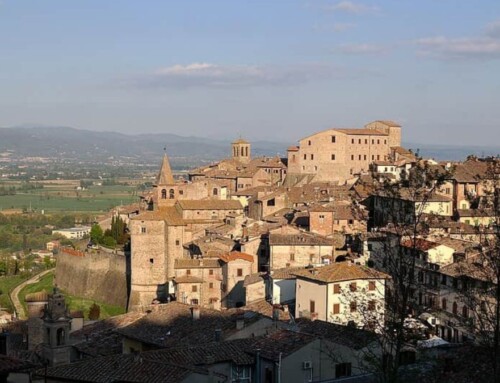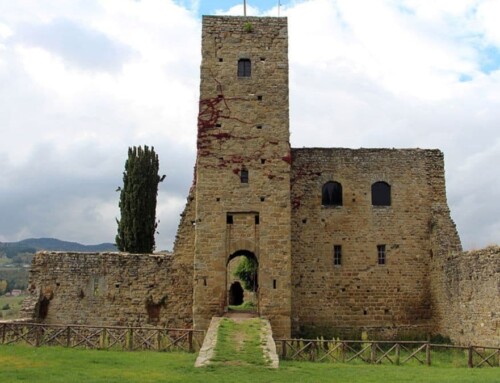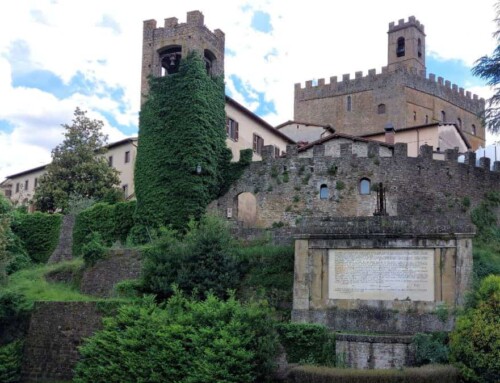Castiglion Fiorentino: 5 artworks not to miss.

Castiglion Fiorentino is a medieval Tuscan town with a rich artistic history, preserving masterpieces such as Bartolomeo della Gatta's The Stigmata of St. Francis and medieval works such as Margarito d'Arezzo's St. Francis. Other treasures include Luca Signorelli's Lamentation over the Dead Christ and Francesco Vanni's Risen Christ.
Introduction to Castiglion Fiorentino
Castiglion Fiorentino is a charming medieval village situated on a hill, a few kilometers from Arezzo, in the heart of Tuscany. With a history dating back to Etruscan times, the town has preserved its historical and artistic soul intact, offering visitors an authentic and charming atmosphere. Its ancient walls, imposing towers and cobblestone streets tell centuries of history, while the many historic buildings and churches testify to the artistic grandeur of the village. Castiglion Fiorentino is nestled in a breathtaking landscape, surrounded by the Valdichiana hills that make every visit an unforgettable experience. Among its many attractions, Castiglion Fiorentino holds some artistic masterpieces worth admiring, works ranging from the Middle Ages to the Renaissance that reveal the cultural importance of this small Tuscan jewel.
The Stigmata of St. Francis by Bartolomeo della Gatta
One of Castiglion Fiorentino’s most famous masterpieces is The Stigmata of St. Francis by Bartolomeo della Gatta, a 1486 work preserved in the Pinacoteca Comunale. This painting was made for the Confraternity of Mercy and originally intended for the Church of St. Francis. It depicts a moment charged with spirituality: the appearance of a cherubim carrying the crucifix in flight, while St. Francis receives the stigmata. Bartolomeo della Gatta’s style, with its expressive vigor and attention to naturalistic details, is deeply influenced by the art of Luca Signorelli. Noteworthy is the landscape in the background of the scene, probably inspired by the hills surrounding the village. This work is a perfect example of the Tuscan Renaissance and testifies to the artistic importance of Castiglion Fiorentino in that historical period. A must-see masterpiece for lovers of sacred art.
St. Francis by Margarito d’Arezzo
The Saint Francis by Margarito d’Arezzo is one of the oldest and most significant works preserved in the Pinacoteca Comunale of Castiglion Fiorentino. Made around the middle of the 13th century, this panel reflects the Byzantine style, typical of medieval Tuscan art, characterized by rigid and hieratic forms. Margarito, a contemporary of Cimabue and Giotto, is remembered by Giorgio Vasari as one of the most important painters of his time. The work depicts St. Francis standing, dressed in the typical habit, while holding a crucifix and a book. The solemnity of the figure and the simplicity of the composition make this depiction of the saint particularly powerful. The painting, originally intended for the Church of St. Francis, is a perfect example of the devotion and sacred art that characterized 13th-century Tuscany. This masterpiece is a must-see historical and artistic testimony for anyone visiting Castiglion Fiorentino.
Compianto sul Cristo Morto by Luca Signorelli in Castiglion Fiorentino
Among the most striking works in Castiglion Fiorentino is Luca Signorelli’s Lamentation over the Dead Christ, preserved in the Museum of the Pieve di San Giuliano. Created between 1480 and 1500, this fresco is an example of the dramatic intensity typical of the art of Signorelli, who was known for his ability to infuse great expressiveness into figures. The work depicts the deposed body of Christ, supported by Mary and surrounded by other figures, including Mary Magdalene and St. John. Each figure conveys a profound sense of grief and participation in mourning, made all the more powerful by the realism of expressions and the attention to detail, such as the golden halos and ornate robes. Although the fresco is partially fragmentary, the emotional power of the composition remains intact, testifying to Signorelli’s mastery and his central role in Renaissance art. A must-see work for anyone who loves sacred art.
The Risen Christ by Francesco Vanni
Francesco Vanni’s Risen Christ, housed in the Church of the Gesù in Castiglion Fiorentino, is a masterpiece of Sienese Mannerism, created at the turn of the 16th and 17th centuries. In this work, Vanni depicts the Resurrection of Christ dramatically and luminously, with the Savior rising triumphant above the onlookers, wrapped in a blue robe and holding the flag symbolizing victory over death. The scene is made vibrant by the brilliant colors and contrasts between light and shadow, typical of the Mannerist style, which emphasize the solemnity of the moment. In the background we can also see the arrival of the women at the empty tomb, a detail that enriches the narrative. Vanni’s painting succeeds in conveying a strong sense of majesty and spirituality, making it an essential stop for those who visit the church and want to discover the sacred art of Castiglion Fiorentino.
The Annunciation by Baccio Bonetti da Cortona
The Annunciation by Baccio Bonetti da Cortona, preserved in the Sensi Chapel in Castiglion Fiorentino, is a fascinating work, created in 1626. Although Bonetti was not one of the most celebrated artists of his time, this painting is an interesting example of sacred art intended for private devotion. The work is a copy of the famous Annunciation by Jacopo Chimenti, known as l’Empoli, preserved in Florence, but it retains its own originality in composition and detail. The scene depicts the angel Gabriel announcing to the Virgin Mary her future divine motherhood, with a sense of quiet solemnity. The colors are restrained and the atmosphere spiritual, typical of this type of depiction. The Sensi Chapel, where the work is placed, makes the moment of the announcement even more intimate and cozy. This little-known but evocative painting is worth a visit for those interested in minor, but no less significant, works of seventeenth-century Tuscan art.
The perfect stay near Castiglion Fiorentino: B&B Country House Poggio del Drago
After exploring the artistic wonders of Castiglion Fiorentino, the perfect place to relax and extend the Tuscan experience is the B&B Country House Poggio del Drago. Located just a few kilometers from the village, this cozy property is surrounded by nature, offering breathtaking views of the surrounding hills. The B&B is perfect for those seeking tranquility and comfort after a day of cultural sightseeing. The rooms are tastefully furnished, combining rustic Tuscan style with modern conveniences. Here, guests can enjoy an infinity pool, manicured gardens and common areas to relax. In addition, Poggio del Drago’s strategic location makes it easy to explore not only Castiglion Fiorentino, but also other must-see destinations in Tuscany, such as Arezzo and Cortona. Staying at Poggio del Drago enriches the travel experience, giving you a stay filled with beauty and serenity.




